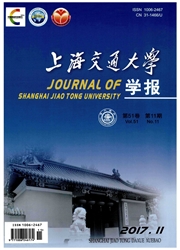

 中文摘要:
中文摘要:
在未知最佳分群单元数的情况下,考虑了零件多种可选工艺路径和零件工艺顺序,建立基于最小化零件跨单元移动次数的数学模型.通过引入自适应变异因子,提出一种改进的离散粒子群优化算法能动态地确定分群单元数,极大地减少了算法陷入局部最优解的可能.通过对文献中不同规模的单元构建问题进行求解,结果证明了该方法有效,并且无需预先设定分群单元数即可获得与文献中相同甚至更好的结果.
 英文摘要:
英文摘要:
The configuration of manufacturing cell was focused on taking into consideration alternative process routings and operation sequences of parts without predetermined number of cells, and a mathemat ical model was proposed with the objective of minimizing intercellular movements. An automatic clustering approach based on the improved discrete particle swarm optimization was proposed for the cell formation problem (ACPSO-CF). The self-adaptive parameter for mutation was introduced to improve the diversity of particle swarm and determine the best number of ceils automatically. The experimental results verify the effectiveness of the proposed approach on all test problems, which exceeds or matches the quality of the best solutions presented in the literature, without predetermination of the number of cells.
 同期刊论文项目
同期刊论文项目
 同项目期刊论文
同项目期刊论文
 期刊信息
期刊信息
